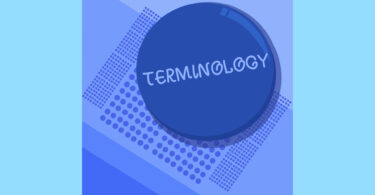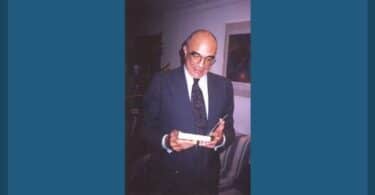Peter Stuart, Homeopathy and Antislavery
Copyright © Sue Young January 2022
Peter Stuart junior (1788?-1888), known as the “Ditton Doctor”, was an English Liverpool shipowner and merchant, who laid the foundation for a vast Imperial trade for the British Empire. Stuart junior was a Lay Homeopath who devoted one afternoon a week for forty years to dispense Homeopathic medication to the poor. It is estimated that during his lifetime he prescribed for some 300,000 to 350,000 people[1]. Stuart junior was also fascinated by Phrenology, and he chose his employees based on this discipline.
Peter Stuart senior (?-?) joined the British Navy and served under Horatio Nelson 1st Viscount Nelson (1758-1805) and fought at the Battle of Trafalgar 1805. Back in Liverpool after this decisive battle, Stuart senior trained as a cooper, spending his free time in study. Stuart junior took up the cause of Italian unification, the abolition of slavery, and the abolition of the Corn Laws (1815-1846).
Stuart junior and Peter Douglas (?-?),an English orthodox physician who converted to Homeopathy, founded the firm of Stuart and Douglas (1845-?1888) on the Brass River in West Africa, where they banished the slave trade from that region. Stuart junior ‘… was proud of the fact that he never made a cent out of the slave trade… [2]’
Stuart junior was a close friend of John Epps (1805-1869)[3] an English physician who converted to Homeopathy[4], Giuseppe Garibaldi (1807-1882), Lajos Kossuth (1802-1894), William James Linton (1812- 1897), Giuseppe Mazzini (1805-1872), Felice Orsini (1819-1858), James John Garth Wilkinson (1812-1899) and many others, and he was a close friend of Samuel Hahnemann (1755-1843) and Clemens Maria Franz Baron von Boenninghausen (1785-1864).
Stuart junior was also on the Management Committee of the English Homeopathic Association EHA (1844-1849) in 1849, alongside John Epps, where he became intimate with the British Homeopathic community at that time.
Stuart junior attended[5] the 2nd International Homeopathic Congress[6] held in London on 11th-18th July 1881[7] at Aberdeen House, Argyll Street, Regent Street. In 1849, the EHA petitioned Parliament in defense of Charles Thomas Pearce (1815-1883), a British orthodox physician who converted to Homeopathy and was a close friend of Garth Wilkinson, about the outrage of such false accusations, especially as there was no redress in law for the damage done to the defendant. The petition was seconded by John Epps.
Stuart junior had been a close friend of John Epps since 1843 when they were both involved in the campaign around the Corn Laws (1815-1846), andthough Stuart junior had been corresponding directly with Hahnemann since the early 1830s[8], it would be John Epps who taught Stuart junior the practice of Homeopathy, and who became the Homeopathic practitioner of his sister. ’… Dear Friend Peter, I did not send the address that you wrote for, first, I have literally not had the time to write one, and second, I felt that the Dissenters were roused…[9]’
Stuart junior also took a close interest in European politics, supporting Giuseppe Garibaldi and Giuseppe Mazzini in every way possible, and involving himself in their campaigns for Italian Unification from the very beginning and lasting well after Unification was achieved[10].
Stuart junior was a profound and generous patron of Homeopathy, and he also procured many Homeopathic relics, which his sons Mazzini Stuart (?-1888) and Orsini Stuart (?-1888) donated to the London Homeopathic Hospital at Great Ormond Street (1859-1947) via the nephew of Giuseppe Mazzini’s godson Joseph Mazzini (?-?) who was named Milton Stuart (?-?)[11]
‘…Through the kindness of the family of the late Mr. Peter Stuart, of Liverpool, and William Leaf, of London, the cause of Homeopathy in this country owes more than the country is ever likely to know. On the death of Melanie Hahnemann, Mr. Peter Stuart, with most laudable hero worship, secured a number of Hahnemann relics, and among the number the documents we now reproduce…[12]’
[William Laidler Leaf (1791-1873) was one of the wealthiest silk merchants in the City of London, with extensive business interests in France. Marie Melanie d’Hervilly Gohier Hahnemann (1800-1878) wasHahnemann’s second wife].
Mazzini Stuart ‘… was a keen homœopathist, and, in conjunction with his brother Orsini, is the donor of the freehold property known as Hahnemann House, which adjoins the London Homeopathic Hospital. In making a gift of Hahnemann House his idea was to provide a Hahnemann Museum, which would become a centre of interest to all Homeopathic doctors. He has also contributed a number of Hahnemannian relics, which form the basis of a permanent collection…[13]’ This collection is now housed at the Hahnemann House Trust at CAN Mezzanine, 49-51 East Road, London N1 6AH[14].
Orsini Stuart was also keen advocate of Homeopathy, and was on the committee of the Liverpool Homeopathic Dispensary and Hospital 42 Hope Street (1842-1976). Orsini Stuart was a Mason, a member of Lodge 2316[15].
Peter Stuart (? – 1917) another son of Stuart junior, was an orthodox physician who converted to Homeopathy and practiced as a pure Hahnemannian Doctor Homeopath.
Stuart junior first met William James Linton, an American English political activist, in 1849[16] when they both stepped forward[17] to support Giuseppe Mazzini‘s efforts to protect an unfortunate boat load of Polish refugees who had just docked in Liverpool.
Stuart junior found them accommodation in a disused soap factory, and supplied them with money and food, and the local population brought them water and straw to sleep on. It would be through Stuart junior that William James Linton would meet John Epps and Garth Wilkinson.
Stuart junior’s son Mazzini Stuart wrote an extensive biography[18] of his father, which has already been reproduced on the website of Homeopathe International by Francis Treuherz and Sylvain Cazalet.
Of interest:
The Lung Disease of Cattle; or pleuro pneumonia cured by homeopathy, Henry Turner 1856 discussed some work done by William Haycock (?1816-?1877)[19],a Scottish orthodox veterinary who converted to Homeopathy, who first noticed this disease in 1842. It was estimated that 6 out of every 10 cattle so affected could be cured, and Stuart junior used Homeopathy at this time to treat up to 180 cows with this disease, saving about 130 of them.
[1] Stuart, Finigan, The Life of Peter Stuart, the “Ditton Doctor”, (1920, Books Limited, and Liverpool and Prescot 1921). Page 83.
[2] Ibid. Page 14.
[3] Epps, Diary of the Late John Epps MD, (John Kent & Co, 1875).
[4] Hoolihan, An Annotated Catalogue of the Edward C. Atwater Collection of American Popular Medicine and Health Reform. : A-L. (University Rochester Press, 2001). Page 294. ;
[5] Anon, The Homeopathic World, Volume 43, (1908). Page 236.
[6] Anon, The Medical Counselor, Volume 7, (The Michigan State Homeopathic Society, 1883). Page 347.
[7] Anon, The Homeopathic World, (August 1,1881).
[8] Stuart, Finigan, The Life of Peter Stuart, the “Ditton Doctor”, (1920, Books Limited, and Liverpool and Prescot 1921). Pages 106-114. ; Finn, After Chartism: Class and Nation in English Radical Politics 1848-1874. (Cambridge University Press, 2004). Page 166. ; Morrell, British homeopathy during two centuries. (Staffordshire University, 1999).
[9] Stuart, Finigan, The Life of Peter Stuart, the “Ditton Doctor”, (1920, Books Limited, and Liverpool and Prescot 1921). Pages 80-81.
[10] Ibid. Multiple Pages.
[11] Ibid. Page 43.
[12] Ibid. Page 85 : Anon, The Homeopathic World April 1st 1905.
[13] Ibid. Multiple Pages.
[14] https://www.hahnemannhouse.org/
[15] Stuart, Finigan, The Life of Peter Stuart, the “Ditton Doctor”, (1920, Books Limited, and Liverpool and Prescot 1921) Page 65.
[16] Linton, Memories, (Lawrence and Bullen, 1895). Page 189.
[17] Stuart, Finigan, The Life of Peter Stuart, the “Ditton Doctor”, (1920, Books Limited, and Liverpool and Prescot 1921). Page 23.
[18] Ibid.
[19] Anon, The American Journal of Homoeopathy, Volumes 7-9, (C. G. Dean, 1852). Page 44.





